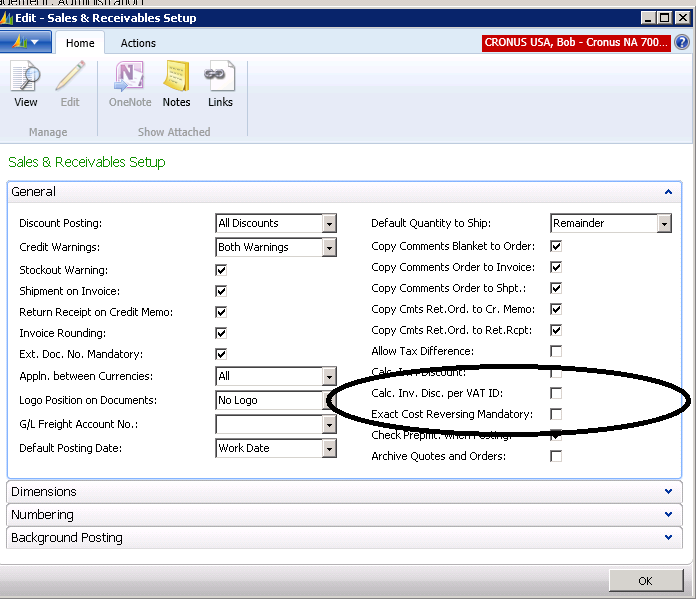Exact Cost Reversing in Microsoft Dynamics NAV 2013

There are a couple of very important setups in Dynamics NAV that shouldn’t be ignored during a new implementation or, for that matter, in an existing implementation.
The scenarios are quite common: Sales and Purchase Returns. The question is that, when a Sales Return is put back into inventory, how should it be valued? And, conversely, when a Purchase Order is returned from inventory, how it should be valued?
Looking at the Sales and Receivables Setup window below, we see that there is a check box for “Exact Cost Reversing Mandatory”.
From the Dynamics NAV 2013 Help Screen: This function is used when the company wants to apply an exact cost reversing policy in connection with sales returns. This means that the sales return is valued at exactly the same cost as the original sale when being put back on inventory. If an additional cost is later added to the original sale, the program updates the value of the sales return respectively.
While this might seems straightforward, some thought should be given before applying Exact Cost Reversing. For instance, if the return was from a shipment made some time ago and the current value of the item is much smaller, it may be better to bring the item in at the new, lower cost.
Figure 1 – Dynamics NAV 2013 Sales and Receivables Setup window
Looking at the Purchases and Payables Setup window, we see another check box for Exact Cost Reversing Mandatory.
Again, while this seems to be straightforward, some thought should be given before continuing. For instance, if your vendor is only giving you a partial credit, then you would, in effect, be taking a loss on the return and that should be accounted for.
From the Dynamics NAV 2013 Help Screen: This function is used when the company wants to apply an exact cost reversing policy in connection with purchase returns. This means that the purchase return is valued at exactly the same cost as the original purchase when being drawn from inventory. If an additional cost is later added to the original purchase, the program updates the value of the purchase return respectively.
Figure 2 – Dynamics NAV Purchases and Payables Setup window
My recommendation is to turn on Exact Cost Reversing Mandatory for both Sales and Purchase Returns. Then, if there is an extraordinary situation where it should not apply, turn it off for the single transaction and then turn it back on.
If you would like more information on this subject or another Dynamics NAV subject, please contact ArcherPoint.
Trending Posts
Stay Informed
Choose Your Preferences
"*required" indicates required fields


